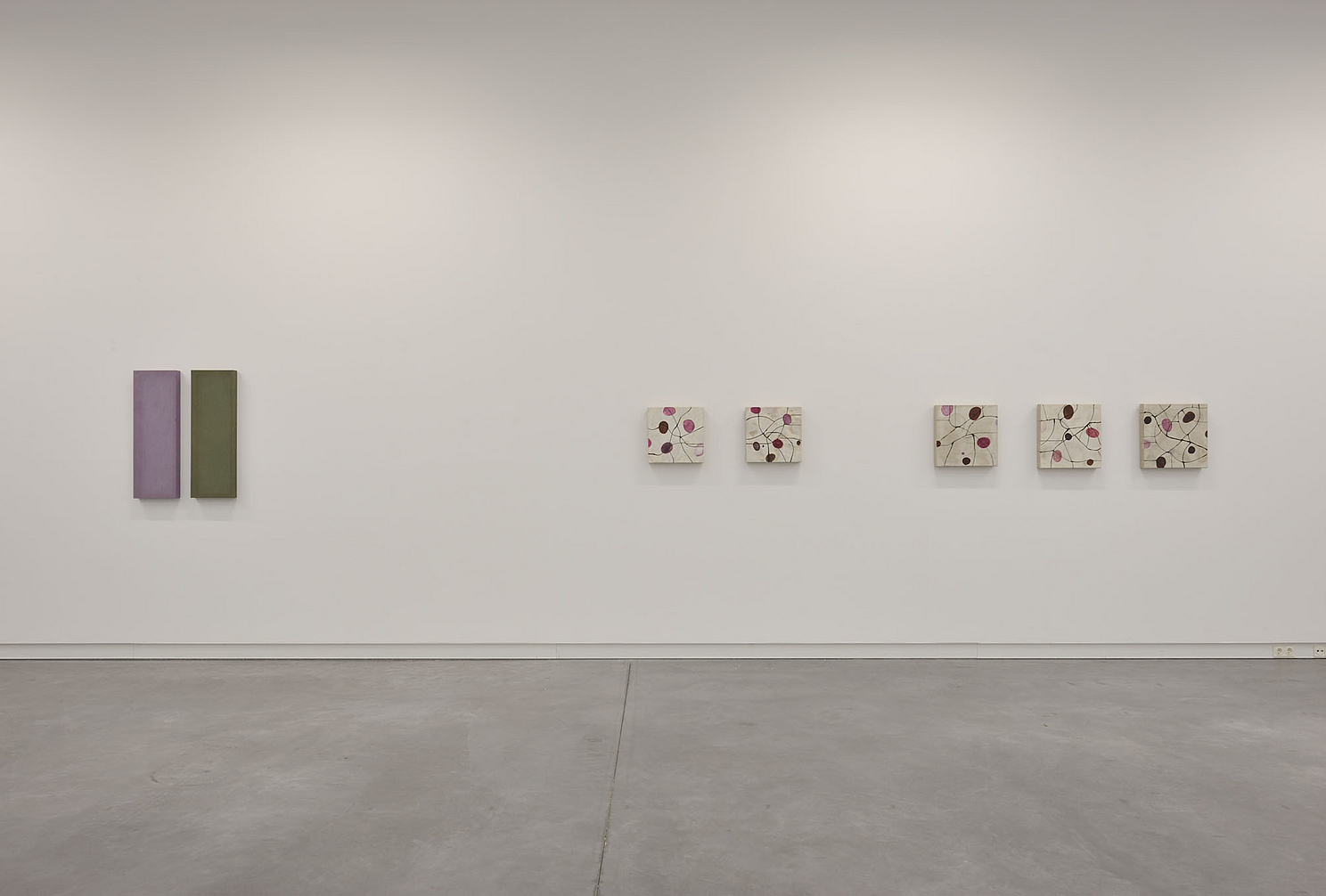Nan Groot Antink
Paintings
1 Nov 2008 - 11 Jan 2009
The exhibition in the project space is devoted to paintings by Nan Groot Antink (Boxtel, 1954). Her earliest works in this presentation date from 1989. Emphasis lies with the recent work.
For roughly twenty years now, color has been the most important theme in Nan Groot Antink's work. Not the emotional or aesthetic aspects, but the color itself is her concern. To her, colors are linked with matter; in her work they assume an almost tangible form. Since 1990 Nan Groot Antink has been producing her own dyes from native and foreign plants, cochineal, lichens, mud and chalk. Her knowledge on the preparation of dyes was acquired through experience, but also from old manuals and during her travels to places such as in Africa and Japan. In her search for dyes Nan Groot Antink has found a way in which to dissociate color from subjective choices and preferences. Furthermore, in her way of applying and combining colors, she wishes to remain detached from taste and aesthetics. The arrangement of colors comes about as the result of objective, but often surprising criteria. A series of monochrome paintings from 1991/92, made with dyes extracted from Dutch plants, derives its sequence from the Heukels & Van Oostrom Flora of the Netherlands. A series of red monochromes produced in 1995 is based on the periodic system, and the pairs of colors in her large Kyoto series from 2003 correspond to colors prescribed for kimonos in a Japanese book of etiquette.
The presently exhibited work from 2006/08, The Wisteria Maiden, consists of two monochrome paintings. A green extracted from mulberry leaves is linked with a purple obtained from gromwell roots: a color combination whose inspiration comes from a kabuki performance with the same title. The paintings acquired their color through successive dye baths. Color and support have become one; the delicate hues and nearly transparent cotton are literally interwoven. For other works, cotton brought from Djenné (Mali) serves as a support. Here the sturdy strips of cotton, sewn together, give the color a robust character. When she subsequently applies paint to the canvases dyed by her, Nan Groot Antink also avoids any personal handwriting. A clearly discernible process and the qualities of the dye determine the ultimate image, while titles refer to the plants from which the dyes were extracted. This is how Nan Groot Antink maintains a unity between the origin, the qualities and the visual form of the colors. In recent years, the strictness with which she employed this point of departure has given way to a more liberal approach. In Venetian paintings (2007/08), for which she used Venetian sumac, Venetian scarlet and nero fumo di Venezia, she combined separate blotches of color on one surface. Then she applied paint through a pipette, allowing it to flow across the surface by tilting the painting. The whimsical pattern of lines is a result of both chance and control. In the most recent works (2006/08) a sense of composition emerges for the first time. Against a white background, dark-colored circles seem to be fighting with each other for their positions. What remains is the concern for the color's qualities: the chalky white of the background is creamy and active; the deep red and green of the circles penetrates into the cloth, while the brown rings of sumac and cutch seem, on the other hand, to lie on the surface.
In her investigations of color, Nan Groot Antink does not limit herself to a single method. With Clair de lune (2008) she returns to the monochromes, and the distinct character of the color takes shape in a totally different way. In this work she has made use of an African cloth which she did not dye herself. The blackish blue cotton has been stretched over a frame. As an ode to this nocturnal blue, she has suspended a band of bright-yellow dyed cotton above this rectangular surface. For Nan Groot Antink, color is not abstraction but a reality filled with poetry.
